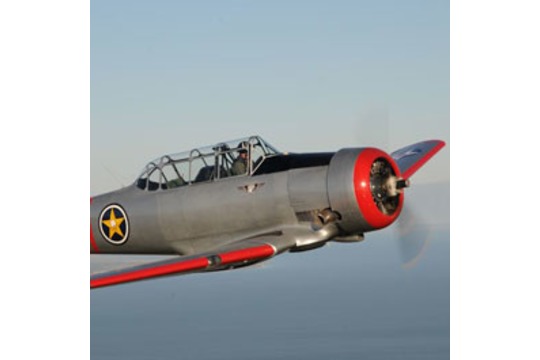AT-6G Ace in the Hole Houston Wing

Description:
Base:
West Houston Airport, Houston, TX
Website:

| AT-6G Specs | |
|---|---|
| Role | Trainer |
| Manufacturer | North American Aviation |
| Introduced | 1935 |
| Produced | 15,495 |
| Length | 8.8 m |
| Height | 3.5 m |
| Wingspan | 12.9 m |
| Range | 1,173 km |
The North American Aviation AT-6 family of Advanced Trainers first entered service in 1938, and variants continued in service until recent times. The aircraft assigned to the Houston wing (affectionately referred to as “Ace”, as it carries the ‘Ace in the Hole’ insignia of the USAF 111th Fighter Squadron) is an AT-6A; about 1,800 were built. The naval version of the AT-6 is the SNJ; the approximate equivalent of the AT-6A is SNJ-3, and another 270 of these were built. In RAF and RCAF service, the AT-6 was known as the “Harvard”; most of these aircraft were built by Canadian Car and Foundry.
AT-6A’s were built at the original North American factory in Inglewood, California and at a new plant in Dallas, TX; the Dallas plant was the dominant source of the model. The AT-6 features a 600 HP Pratt & Whitney R-1340-49 radial engine, a variable-pitch propeller and retractable main landing gear. It also could be fitted with machine guns for use in gunnery training.
Later versions of the AT-6 (which was by then referred to simply as the T-6) continued in service after WWII. In addition to a training role, T-6’s were used as forward air control aircraft during the Korean War. They were often referred to as “Mosquitos” during this action. Several countries also used armed T-6’s as ground attack or counter-insurgency aircraft.
In 2001, the U.S. Defense Department recognized the legacy of the AT-6 Texan (often referred to a The Pilotmaker) by designating their new turboprop-powered trainer the T-6 Texan II.

